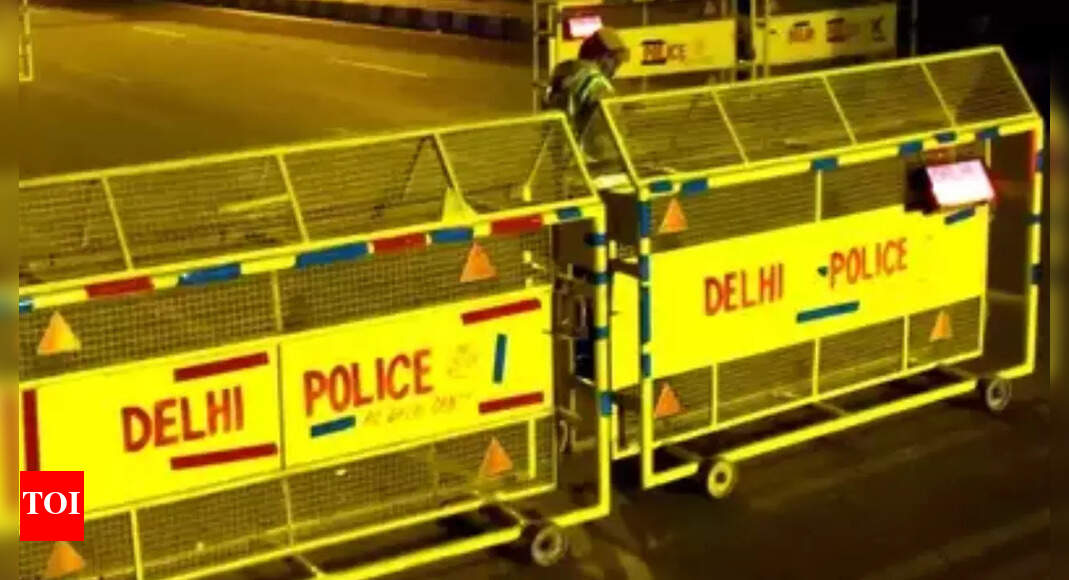NEW DELHI: Delhi Police on Sunday released the crime data for the first quarter of 2025, revealing that street crimes have considerably reduced in the city this year. While snatchings are down by around 38%, robberies have gone south by around 26% compared to the same time period (Jan-March) last year.
Crimes against women have also substantially dipped in the first quarter of 2025 compared with 2024. Rape cases have decreased by around 19% from 2024 while molestations and eve teasing cases have reduced by around 15%. The data suggests that efforts to tackle crimes against women, such as the anti-Romeo (Shishtachar) squads, may be yielding results.

For crime control, police have been taking a range of steps, they said. On the directions of Union home minister Amit Shah, the city cops have been focussing on enhancing community policing through initiatives like holding Jan Sampark Sabhas.
“Regular interactions, neighbourhood watch programmes and public outreach initiatives are helping build trust, encouraging citizens to report suspicious activities and provide valuable information to aid investigations,” police commissioner Sanjay Arora said. Regular coordination meetings with CM Rekha Gupta and minister Ashish Sood are also being held.
The initiatives have led the cops to contain cases of murders in the city too. According to the data, murder cases decreased by 8.7% from 115 in 2023 to 105 in 2024, and then showed marginal fluctuation of 1.9% with 105 in 2024 and 107 cases in 2025. Overall, murder cases decreased by 7% from 2023. Attempt to murder cases dropped by 17.2% (from 203 in 2024 to 168 cases in 2025). The strategic use of technology significantly enhancing crime control efforts as well. By leveraging tools like CCTV cameras, crime mapping and data analytics, police are able to identify crime hotspots, track patterns and deploy resources more effectively.
“This data-driven approach enables police to respond swiftly to emerging trends and prevent crimes before they occur. Increasing police visibility and foot patrols in high-crime areas is also playing a vital role in deterring criminal activity,” said Devesh Srivastava, special commissioner (crime). With 424 robbery cases in 2024 to 315 cases between Jan and March in 2025, this crime-head witnessed a drop of 25.7%. Snatching cases rose 6.2% from 1,812 in 2023 to 1,925 in 2024, before dropping 37.7% to 1,199 cases in 2025. Total heinous crimes increased 11.1% from 1,078 in 2023 to 1,198 in 2024, but then decreased 19% to 970 cases in 2025.
With 455 cases between Jan and March in 2024 and 370 cases in 2025 in the corresponding time period, rape cases witnessed a drop of 18.7%. Molestation cases decreased by 18.8% from 547 in 2023 to 444 in 2024, and further dropped 14.6% to 379 cases in 2025.
“One key approach has been the deployment of police personnel in high-crime areas, particularly during peak hours. This increased visibility has helped deter potential offenders and provided citizens with a sense of security,” Srivastava added.
Police are using data analytics to identify crime hotspots and patterns, enabling targeted interventions and patrols. “This involves focusing on high-crime areas and times to maximise impact. Intelligence-led policing is also crucial, where data and intelligence are being used to identify and track potential offenders and deploy resources more efficiently,” Srivastava added.
City cops are also increasingly leveraging advanced technologies like facial recognition and Automatic Number Plate Recognition (ANPR) cameras to control crime. Facial recognition technology allows police to identify suspects and track down criminals by analysing footage from CCTV cameras, social media and other sources. ANPR cameras help track vehicle movements and identify stolen or suspicious vehicles. By monitoring vehicle movements in real-time, police swiftly respond to crimes.











